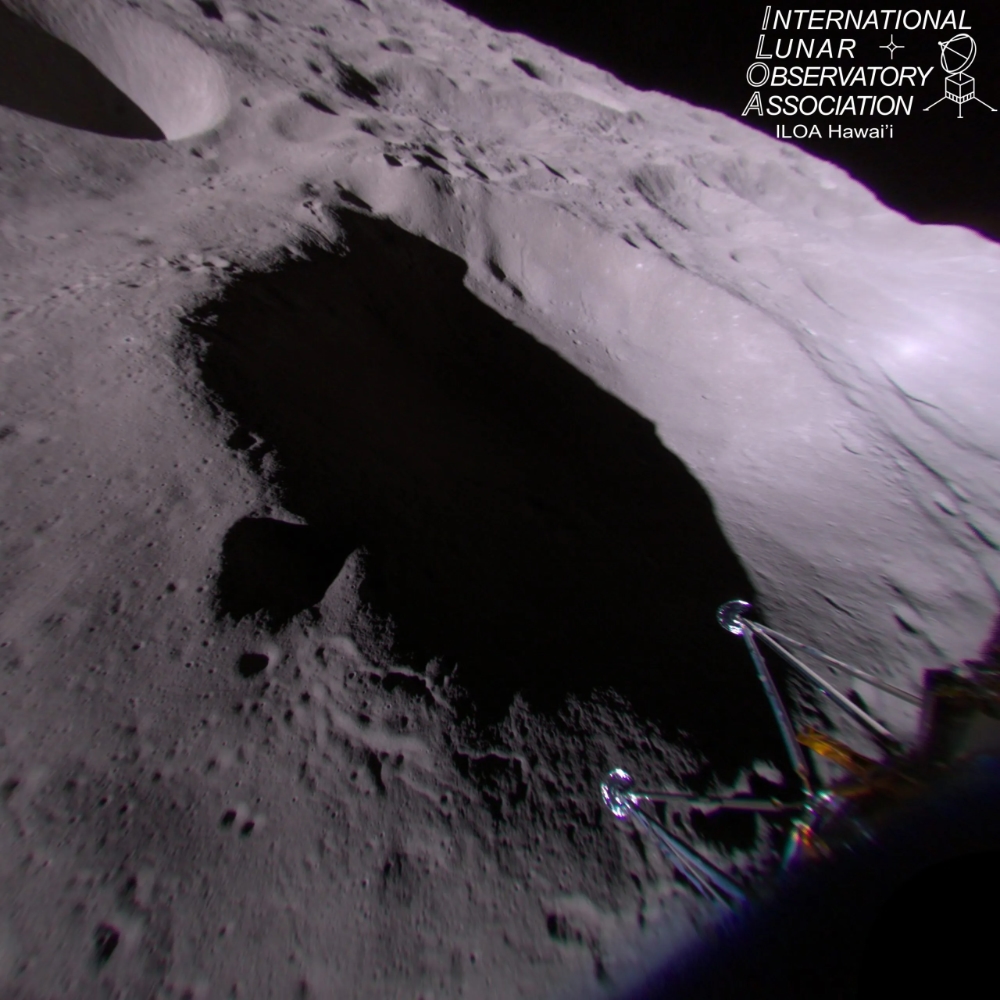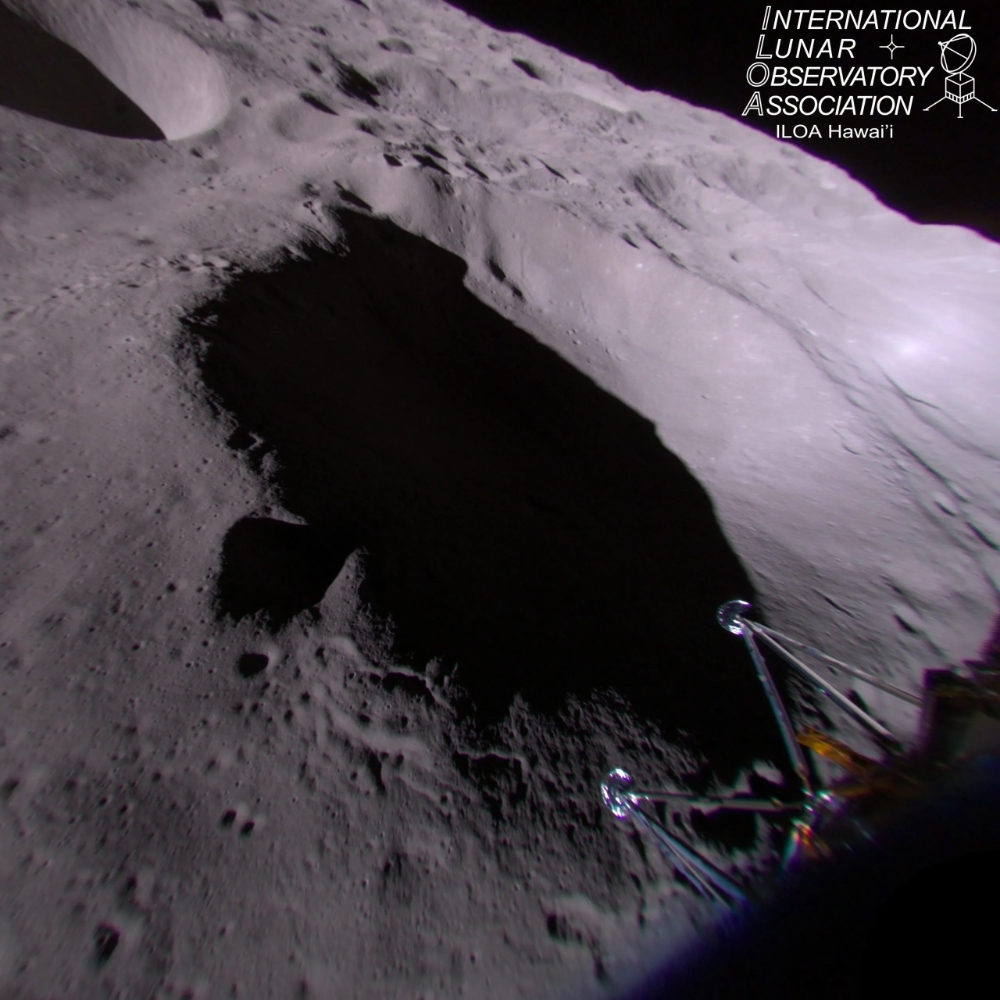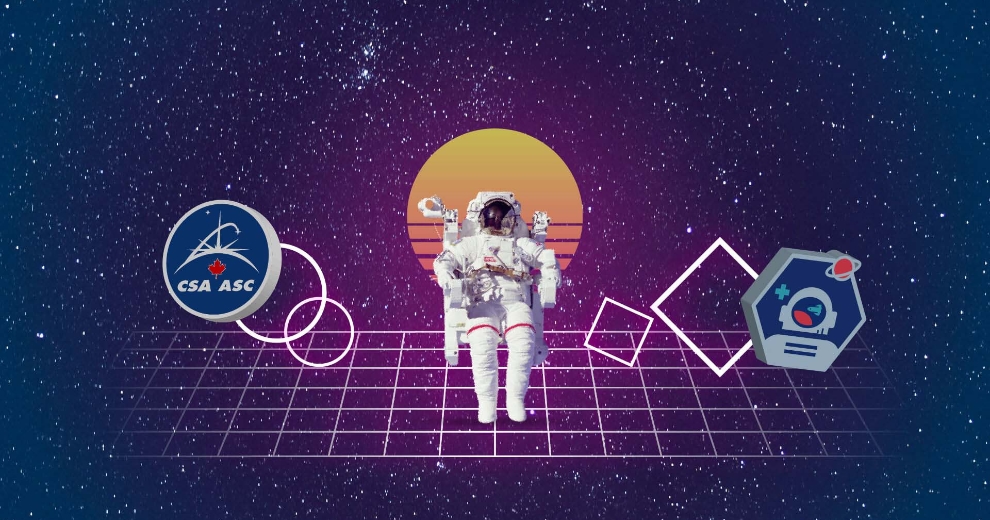Technology from Ontario’s Canadensys Aerospace was recently on the first U.S. Moon lander to make a soft touchdown in more than 50 years, since the Apollo 17 human landing mission of 1972.
Intuitive Machines’ robotic IM-1 mission, which included NASA payloads as well for the agency’s Commercial Lunar Services Program (CLPS), touched down at the south pole on the Moon on Feb. 22. The effort ended up being an abbreviated mission, as it landed in an orientation that was not expected due to a technical problem that arose shortly before landing – as will be explained more below.
NASA and Intuitive Machines frame the mission as a massive success – and Canadensys agrees. SpaceQ caught up with Canadensys Aerospace president and CEO Christian Sallaberger to learn more about IM-1, what went well and what could be improved upon from his perspective, and where the company plans to go next with both lunar exploration and other space exploration projects.
A full transcript of the interview follows.
SpaceQ: How did the mission go? Did it meet your metrics of success?
Sallaberger: Absolutely! This historic mission was the first commercial soft-landing on the surface of the Moon. That alone is a huge deal and qualifies the mission as a tremendous success as it allowed humanity to take the next step in extending our economic sphere of influence into full cislunar space. Space missions can be challenging and sometimes require adapting to the conditions.
On this mission, on the day of landing, Intuitive Machines performed a mission critical software update. The main landing altitude sensor was not operational, and a back-up system [from NASA] was able to be substituted during cruise. These types of in-situ adjustments can be expected on a ground-breaking mission like this.
Canadensys Aerospace had seven cameras and telescopes on this mission. Some were tremendously successful, such as the cameras that captured all the spectacular images that were publicly released by Intuitive Machines and NASA from the mission. Others did not achieve their full potential due to the final orientation of the lander when it came to rest on the moon.
Again, this does not undermine the achievements of the mission as a contribution to humanity’s lunar exploration adventure. We learn and advance both from things that worked well, and things that encountered challenges. One must remember that these lunar missions cannot be viewed in isolation. Each builds on lessons learned from the previous missions.
The Astrobotic Peregrine mission a month earlier had successes and challenges, and shared data [following an unsuccessful attempt to reach the Moon] that allowed this IM-1 mission to advance further. Another example is the ispace Hakuto-R mission to the moon last year [that failed to achieve a soft touchdown]. Canadensys had cameras on that mission, and analyzed all the data from the operation of our systems on that mission, which allowed us to make improvements to our hardware, software and operational procedures on this IM-1 mission.
This IM-1 mission will help us, both Canadensys as well as the global lunar exploration community, advance forward for the next lunar missions.
SpaceQ: What data did you gather and what did you learn about the operation of the equipment?
Sallaberger: We gathered lots of data from this mission. We have many images that were taken by the various Canadensys instruments. These include the spectacular iconic high-resolution images that were released by NASA and Intuitive Machines, and used by CNN, the New York Times, and media around the world in their coverage of the mission.
Of course we are tremendously proud at Canadensys of this. However, we gathered lots of other important data. This includes hundreds of “thumbnail” images from the instruments. This is important. Communication bandwidth is typically a bottleneck with lunar missions. So our instruments are built with powerful computers and memory onboard, in order to store images, compress them and transmit many low-resolution images. It allows our ground operators, in consultation with the various mission scientists and astronomers we work with, to decide which would be the best high-resolution images to send back to Earth.
In addition to images of various resolutions, we also gathered lots of telemetry data from our instruments, such as temperature and power consumption. All of this allows us to characterize the operation of the equipment – not only how it worked, but also how it was used, so we can develop improvements for future missions.

SpaceQ: Any “lessons learned” or things to improve upon for future generations of the equipment?
Sallaberger: On this mission we were quite pleased overall with the performance of our instruments. We learned a lot about operating the equipment in the context of a multi-party, multinational commercial lunar mission, where we needed to coordinate with international partners, and share the precious communications time with the spacecraft. This was an especially intense process on this mission, as the communication bandwidth was less than had been planned, so we all had to make adjustments.
Based on this experience, we have some ideas, especially on the software side, about how we generate and transmit instrument command scripts that can combine multiple commands efficiently into a single sequence. We look forward to implementing this on future lunar missions.
SpaceQ: What’s next for Canadensys in terms of space projects that are launching, overall?
Sallaberger: As far as lunar missions go, our next mission of significance will likely be the NASA Vertex mission. Canadensys is providing the multi-spectral microscope for this mission, which will land in the Reiner Gamma region of the moon. This area is very unusual, with swirling patterns in the surface regolith and magnetic anomalies as well. NASA is sending a number of instruments on the mission, which will provide the scientists with data to determine what is really going on at Reiner Gamma. We have already delivered our instrument to APL some months ago. APL (Applied Physical Laboratory at Johns Hopkins University) is the mission prime, and is integrating the instruments for launch to the moon in about three months’ time.
Another significant lunar mission Canadensys is currently preparing is the Canadian Lunar Rover Mission. Canadensys is leading a team of about 20 organizations across Canada to design and build Canada’s first lunar rover, which will land near the Moon’s south pole. Among other tasks, it will venture into permanently shadowed regions to examine and characterize the frozen water reserves. The rover will also carry instruments that will gather data to support future human surface missions. The mission is currently scheduled to fly in 2026.
Canadnesys is also developing lunar greenhouse systems, with Canadian, European and American partners. We anticipate an initial precursor demonstration mission flying to the Moon in the coming few years, and eventually to be providing fresh lunar-grown vegetables to feed astronauts on the lunar surface at Artemis and other lunar outposts.
Canadensys has cameras planned on many of the upcoming lunar missions by Intuitive Machines, Firefly, Astrobotic, and others. We expect to have over 25 cameras operating on the lunar surface on various lunar landers in the coming three years. Finally, on the pure commercial side, Canadensys is also a robotics and surface vehicle partner and supplier to a number of international companies that are developing commercially competitive lunar activities in the mining, energy production or distribution, and transport sectors.
SpaceQ: When will the next generation of IM-1’s equipment fly and with whom, if you can say?
Sallaberger: Canadensys is a trusted supply-chain partner to Intuitive Machines, and we have multiple imaging systems onboard each of their upcoming lunar missions: IM-2, IM-3, IM-4. These instruments are members of our NISA (Nano Immersive Situational Awareness) lunar camera family.
These cameras are designed to operate in the very challenging environment on the surface of the Moon, by not only withstanding the radiation environment, but being to survive the extreme temperature swings between day – up to plus 100 degrees Celsius – and night – colder than -200 degree Celsius – on the lunar surface. Our NISA cameras are also manifested on lunar landers with other providers. We expect to have over 25 NISA cameras operating on the lunar surface on various lunar landers in the coming 36 months.
SpaceQ: Anything else you’d like to add?
Sallaberger: We are in a very exciting time right now for humanity as we start to realize the full potential of lunar exploration, commercialization and surface activities. The coming decade or two will be transformative as the Earth’s economic sphere of influence is expanded to include all of cis-lunar space. We are immensely proud at Canadensys to play our own small role in opening up this new frontier.



